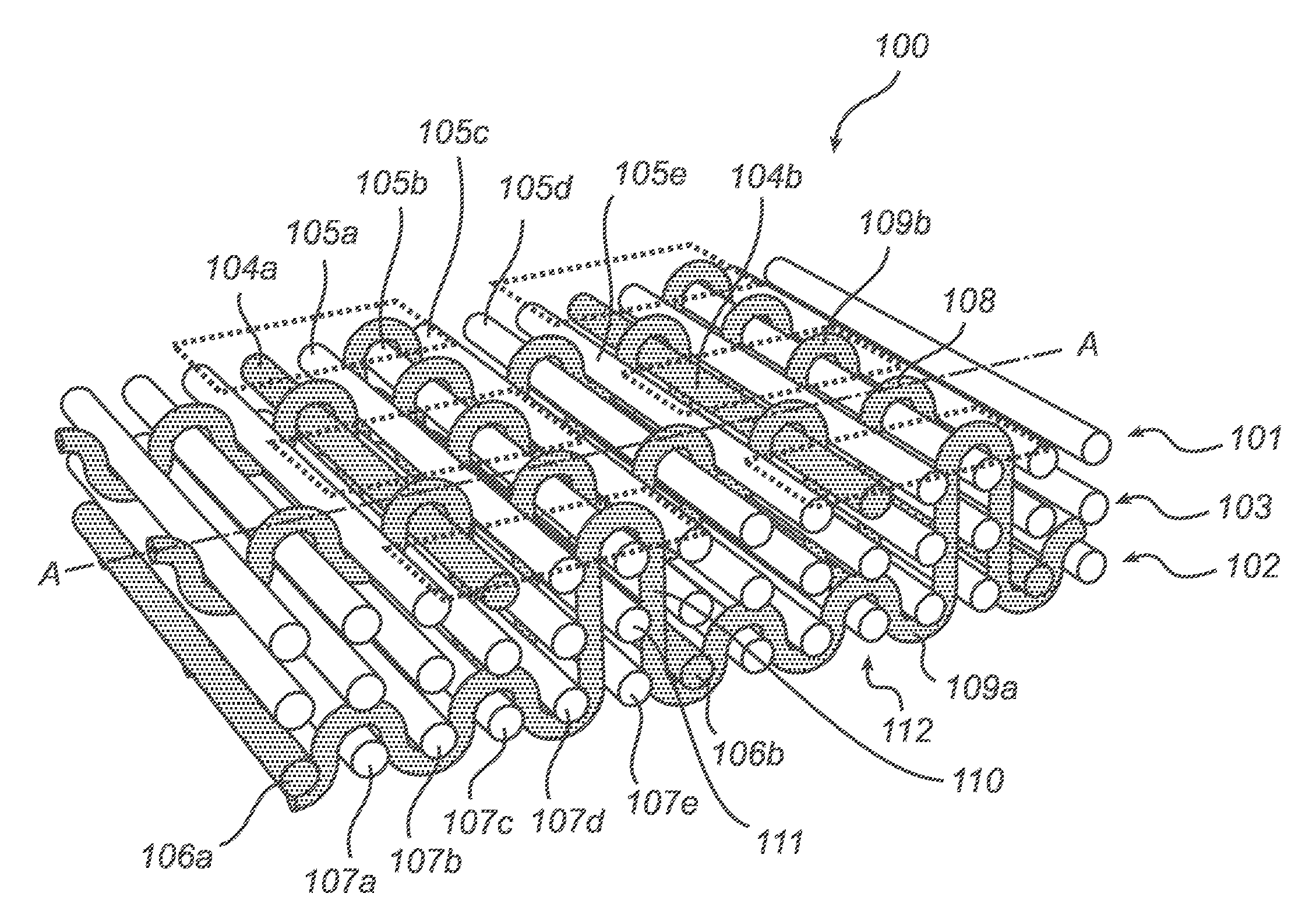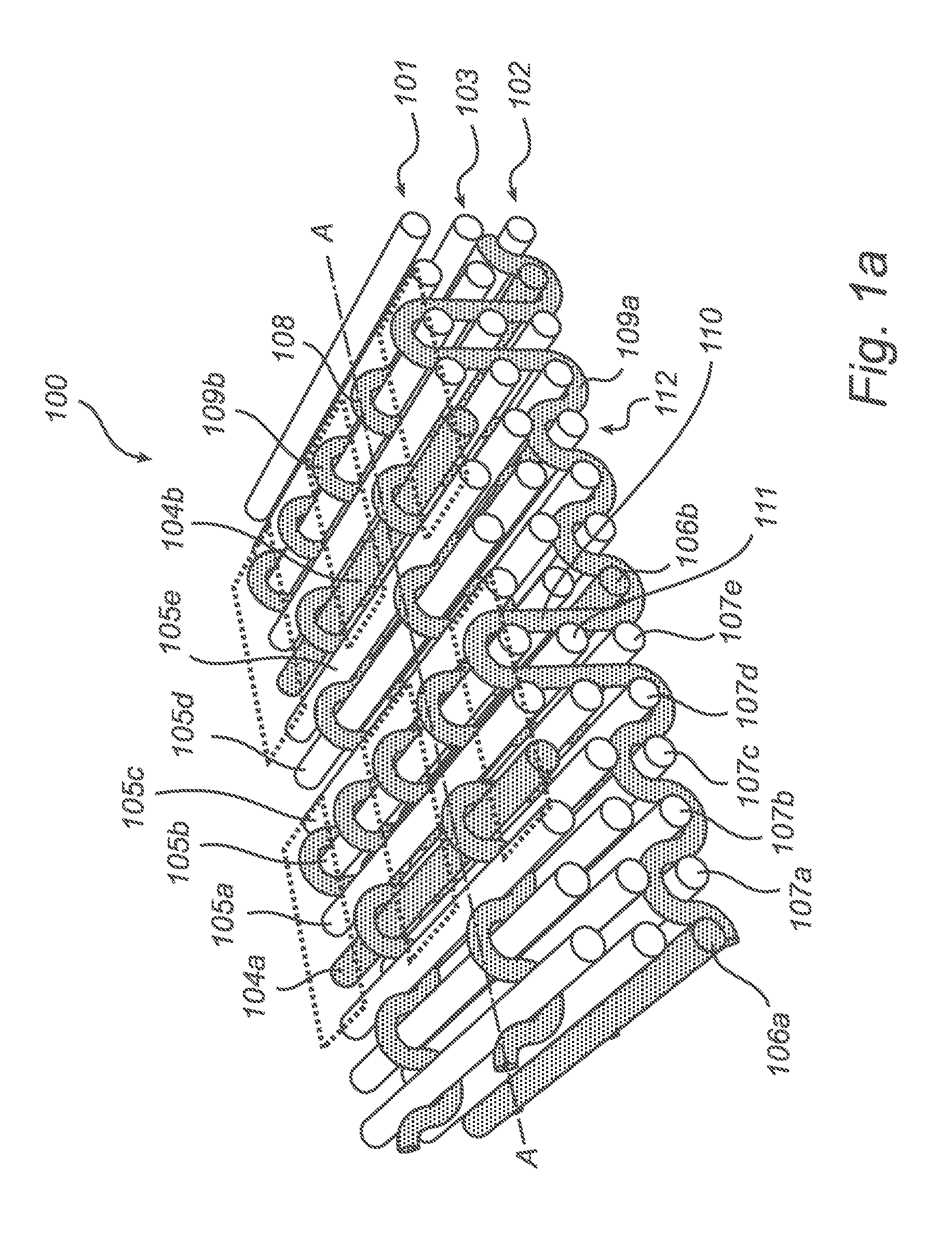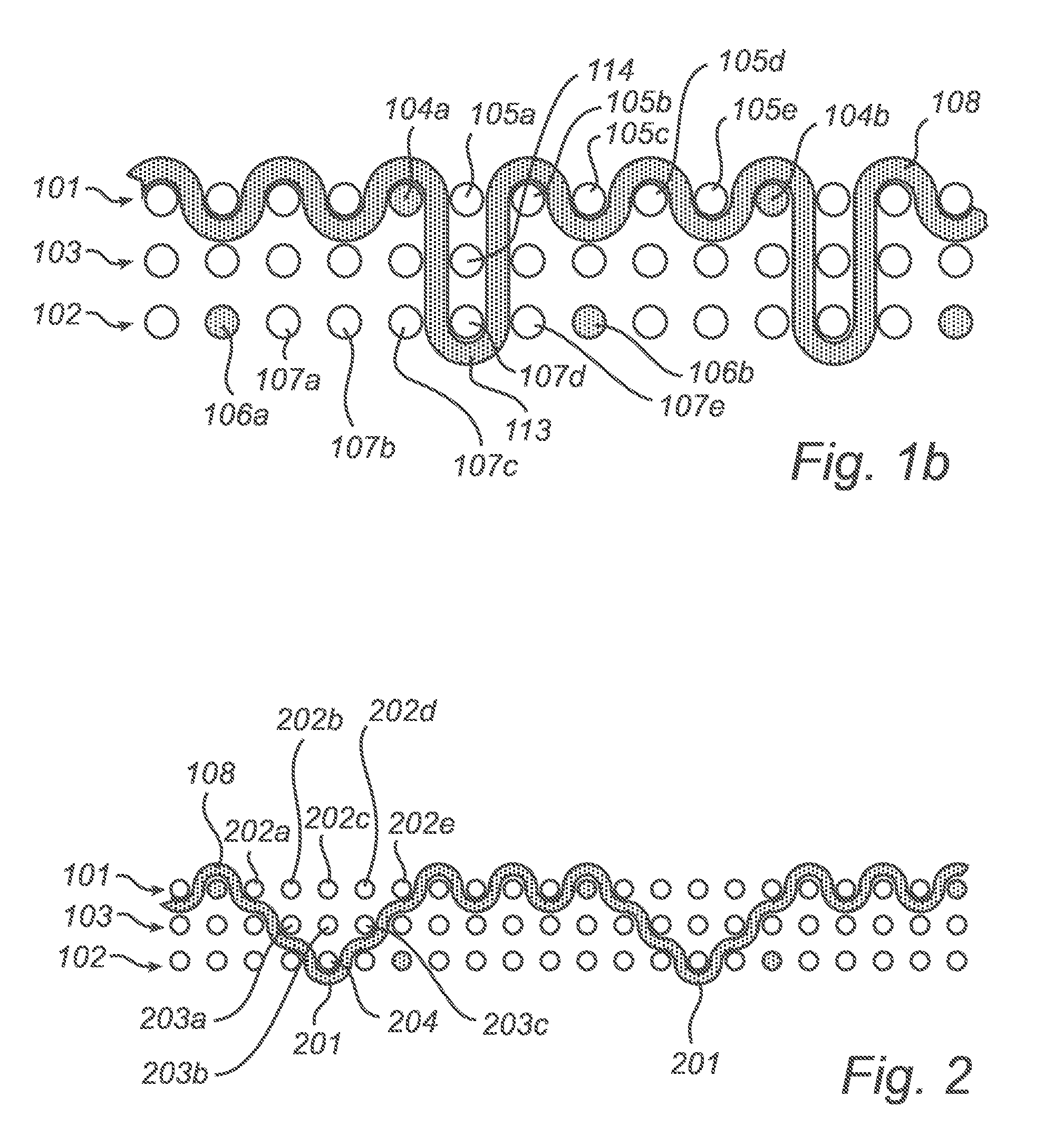Textile for connection of electronic devices
- Summary
- Abstract
- Description
- Claims
- Application Information
AI Technical Summary
Benefits of technology
Problems solved by technology
Method used
Image
Examples
first embodiment
[0041]In FIG. 1a, a three-layer woven textile 100 according to the present invention is schematically shown having an upper 101 and a lower 102 warp layer which are separated by an intermediate warp layer 103. The upper warp layer 101 comprises an array of conductive warp yarns 104a-b separated by non-conductive warp yarns 105a-e, and the lower warp layer 102, in the presently illustrated example, has an identical, but translated, configuration of conductive 106a-b and non-conductive 107a-e warp yarns. The intermediate warp layer 103 here consists of all non-conductive warp yarns. However, this is not necessarily the case.
[0042]In the weft direction, one conductive weft yarn 108 from a first set of conductive weft yarns and two conductive weft yarns 109a-b from a second set of conductive weft yarns can be seen in FIG. 1a. Non-conductive weft yarns may be present between the conductive weft yarns shown in FIG. 1a, but have here been omitted for the sake of clarity.
[0043]Referring aga...
second embodiment
[0046]In FIG. 2, schematically illustrating the textile according to the present invention, loops 201 are shown, which are formed by conductive weft yarns 108 of the first set of conductive weft yarns, around non-conductive yarns 202a-e in the upper warp layer 101, non-conductive yarns 203a-c in the intermediate warp layer 103 and the non-conductive yarn 204 in the lower warp layer 102. According to this embodiment, the conductive weft yarns 108 interact to a greater degree with the warp yarns of the intermediate warp layer 103, leading to a better anchoring of the conductive weft yarns 108. FIG. 3 is a schematic view illustrating the robustness of an electronic textile utilizing a textile according to an embodiment of the present invention.
[0047]In FIG. 3, a conductor pattern of a portion of an electronic textile 300 is schematically shown, where the upper layer conductive grid 301 is indicated by the solid grid lines in rows 302a-f and columns 303a-e, and the lower layer conductiv...
third embodiment
[0051]With reference to FIGS. 4a-d, a textile 400 according to the present invention, enabling connection of three independent electronic devices 401, 402, 403, here in the form of LEDs, for every upper grid element 404 of the textile 400 will be described in the following.
[0052]As described previously in connection with FIGS. 1a-b, the upper conductive grid 405 is here formed by conductive warp yarns 406a-b and conductive weft yarns 407a-b. In each upper grid element 404, three upper layer connection points 408, 409, 410 are formed by weft yarn loops from three respective separate lower conductive grids, as will be described in connection with FIGS. 4b-d.
[0053]Through the configuration illustrated in FIGS. 4a-d, three sets of electronic devices, such as differently colored LEDs can be controlled separately from each other, so that, for example, the color of light emitted by an electronic textile can be tuned across the color gamut defined by the LEDs employed.
[0054]In FIG. 4b, a c...
PUM
| Property | Measurement | Unit |
|---|---|---|
| Electrical conductor | aaaaa | aaaaa |
Abstract
Description
Claims
Application Information
 Login to View More
Login to View More - Generate Ideas
- Intellectual Property
- Life Sciences
- Materials
- Tech Scout
- Unparalleled Data Quality
- Higher Quality Content
- 60% Fewer Hallucinations
Browse by: Latest US Patents, China's latest patents, Technical Efficacy Thesaurus, Application Domain, Technology Topic, Popular Technical Reports.
© 2025 PatSnap. All rights reserved.Legal|Privacy policy|Modern Slavery Act Transparency Statement|Sitemap|About US| Contact US: help@patsnap.com



